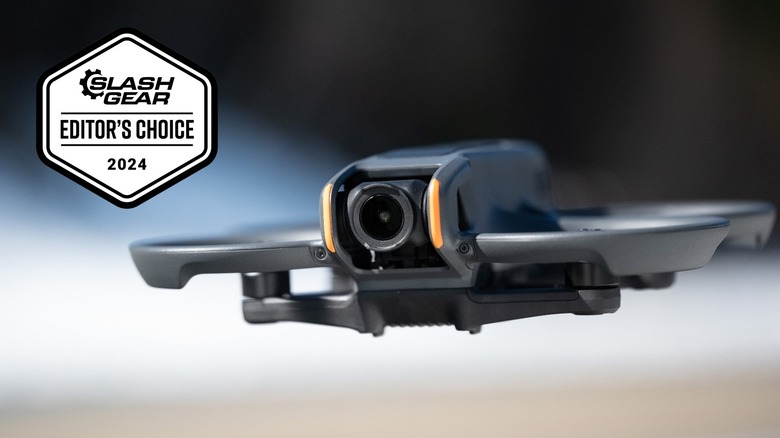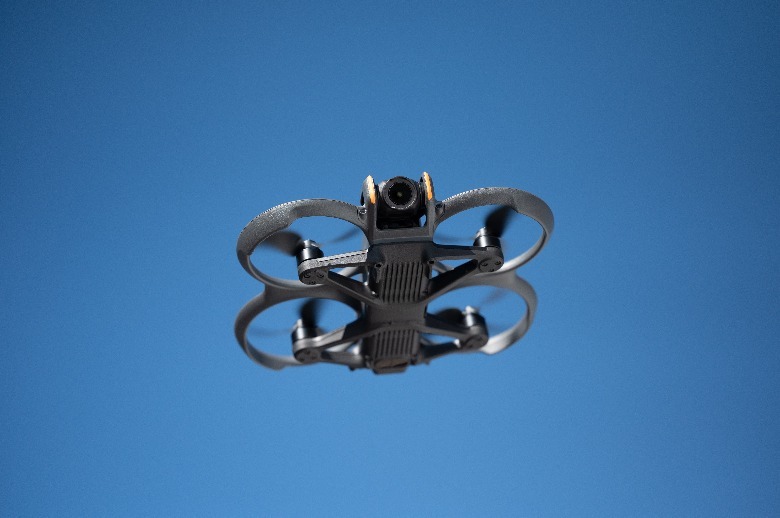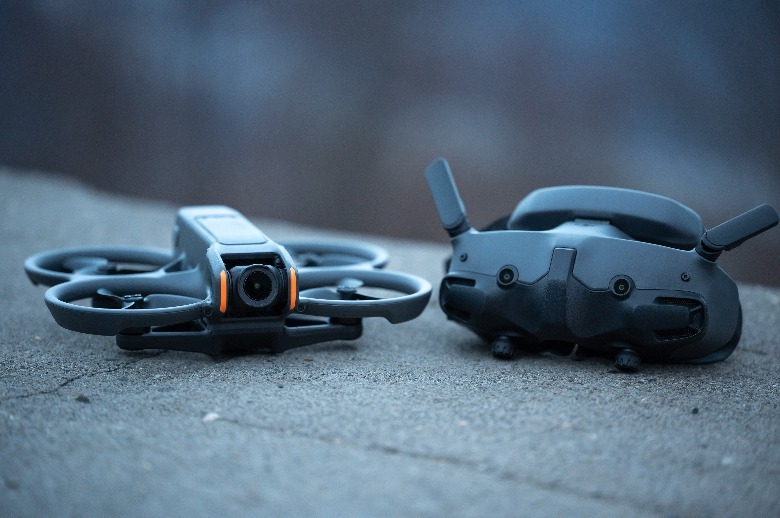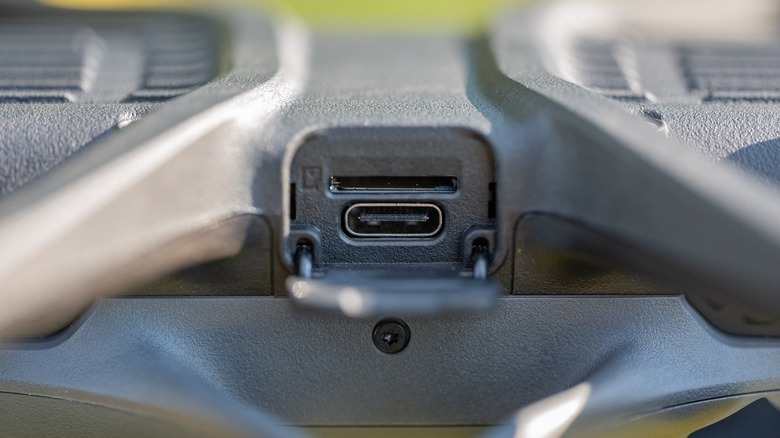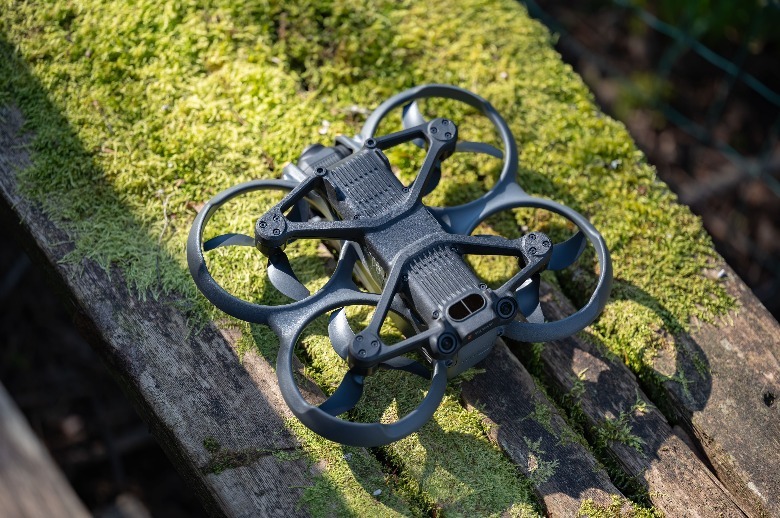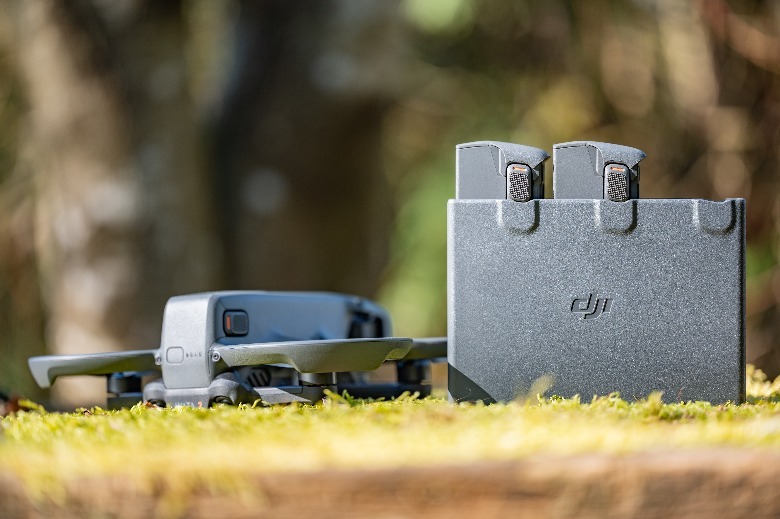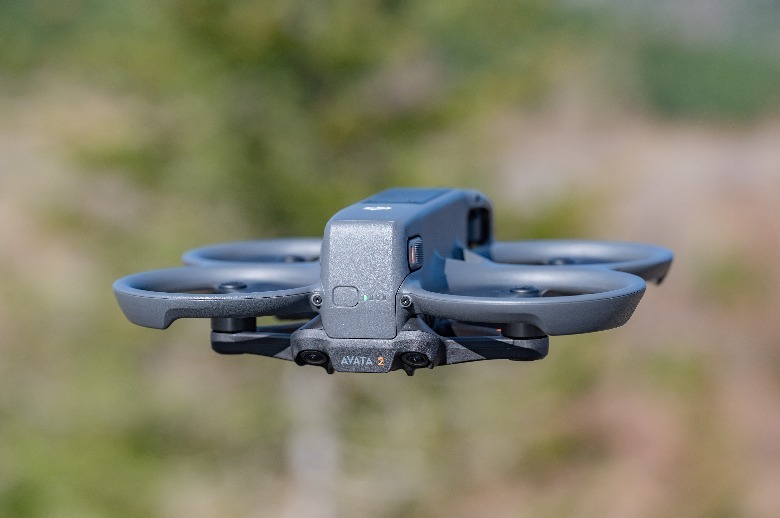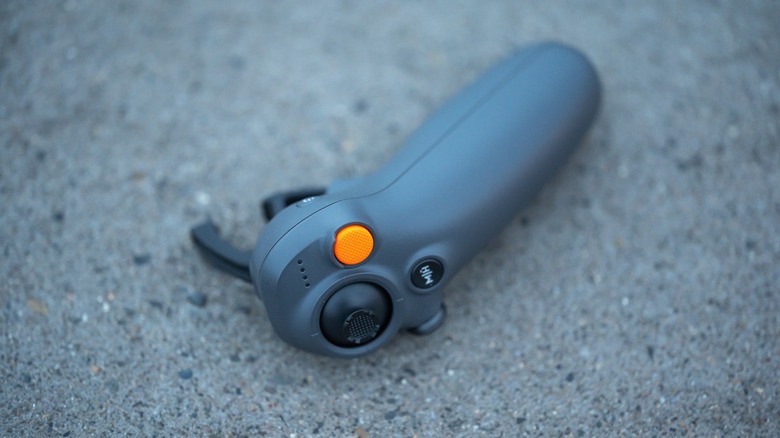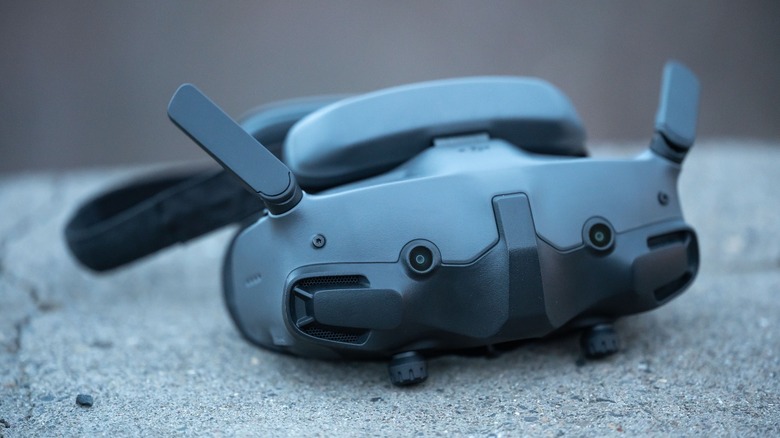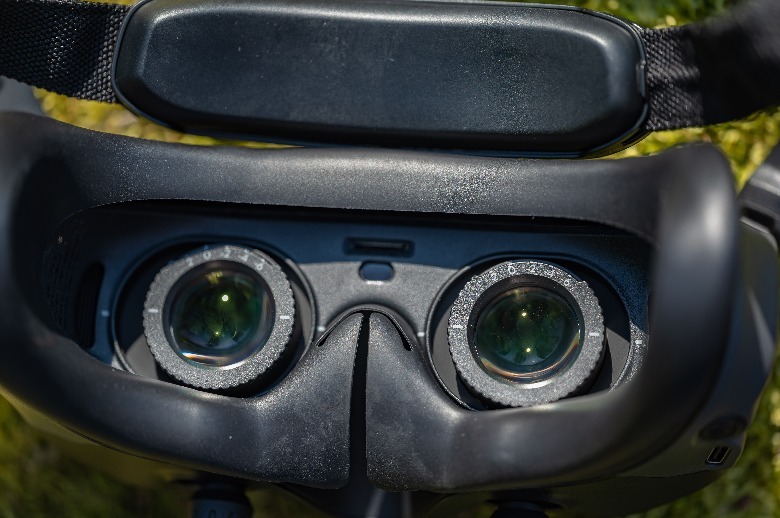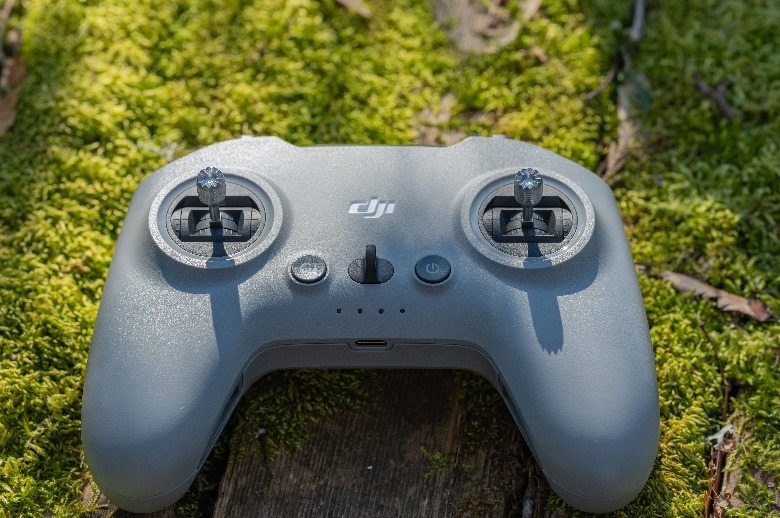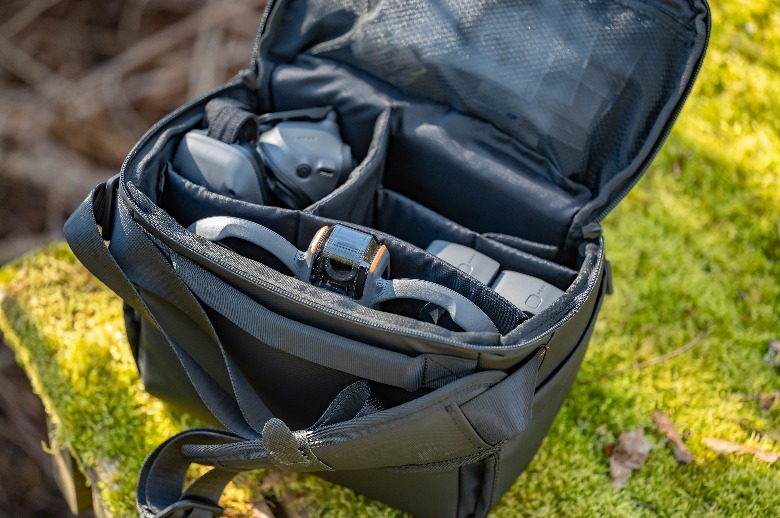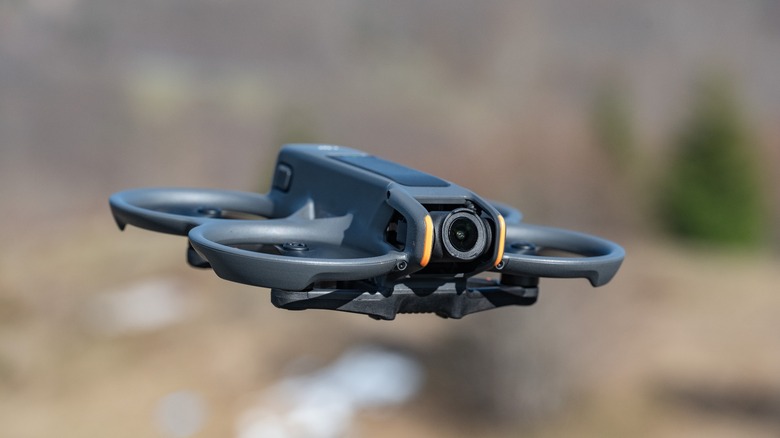DJI Avata 2 Review: Taking A Great FPV Drone To New Heights
- Larger image sensor offers big improvement to image quality
- Much quieter than previous DJI FPV drones
- Easily accessible port placement is a major upgrade
- New DJI Goggles are much more ergonomic
- Fast and agile, with responsive motion control system
- Offers both beginner friendly and advanced manual flight modes
- Upgraded accessories and new features
- Activation process is still annoying
With the DJI Avata 2, DJI has yet again made radical changes to their previous FPV (first person view) drone, and in doing so has fixed almost every negative aspect of older models. Where DIY FPV systems come bundled with a steep learning curve, the Avata 2 is ready to fly out of the box and offers both an accessible entry point to novices and a fully functional acrobatic experience to veteran pilots.
If you're looking for a drone to capture aerial photos or sedate, cinematic video, this isn't it. The DJI Avata 2 is an adrenaline junky's dream, designed for capturing exhilarating video and for flying places where you'd never want to go with a more traditional drone. On paper at least, the Avata 2 looks just about perfect, but we've got to take to the skies to see if it lives up to the hype.
DJI provided a sample of the Avata 2 for this review.
Larger sensor for improved image quality
The new 1/1.3 size sensor in the Avata 2 is a major improvement over the original Avata's 1/1.7 sensor, and it really shows in the quality of the video this drone is able to capture. It's now much more in line with what you'd expect from the DJI Mini 4 Pro, which as I found when reviewing that drone last year is very good indeed. A big difference from the Mini 4 Pro, and other camera drones like it, is that the DJI Avata does not have a 3-axis gimbal. Instead, it relies on digital stabilization, called Rocksteady by DJI, and is basically what you'd find in an action camera such as the DJI Action 4 or GoPro Hero 12.
Overall, there's a noticeable improvement over the Avata 2's predecessor, and unlike most FPV drones, the Avata 2 delivers video footage that's good enough that you don't need to consider attaching an action camera to the top of it.
10-bit recording and FOV options
In terms of low light capabilities, the larger sensor delivers cleaner footage in dim conditions, with flaring, vignetting, and distortion being well controlled by default, albeit at the cost of a narrower field of view. The drone gives you the option to shoot in standard, wide, or ultra-wide angles, which offer advantages for different scenarios. Personally, I prefer the narrower field of view, and spent most of my time flying with that.
A big upgrade that those looking to do post-processing will appreciate is the ability to record in 10-bit D-log M color mode. This provides a lot more flexibility than the D-cinelike color mode which was included in the original DJI Avata, and I found it to be really nice to work with to achieve high-quality results. Dynamic range has also been noticeably improved by two stops, so you lose less detail in the shadows and highlights of your images compared to the first Avata drone.
Accessible ports and robust build quality
My biggest gripe with the original DJI Avata was the placement of its USB-C and MicroSD card slot. The port cover was hidden inside of one of the prop guards, making it extremely difficult to access. Downloading video to my PC was always a pain in the neck, but fortunately, all that's changed with the DJI Avata 2. Now the ports are located conveniently on the lower side of the drone, between and underneath the props. What's more, now it's possible to charge the battery in the drone via USB-C. In terms of storage, you can get away without a MicroSD card if necessary, as the drone features 48GB of onboard data space.
The Avata 2 is also one tough drone, which is important considering how it's practically a certainty that you'll crash an FPV drone at some point, and probably sooner rather than later. The integrated prop guards, rugged materials, and guards for the camera mean that it really can take a hit. I had three crashes myself while testing it, the worst of which was a full-speed collision with a fallen tree when I misjudged a gap I was aiming to zip through. The Avata 2 came through completely unscathed, and I'm confident it's at least as durable as the original Avata. In the years I've been flying the older model of this drone I've experienced many dramatic crashes, and it never took any real damage.
When you crash, if the drone ends up upside down, you can just flip it right-side-up by activating "Turtle Mode", which revs the engines and pops it up ready for flight. The Avata 2 also features "Return to Home," a brake function to quickly stop the drone with the push of a button, and binocular fisheye sensors to improve stability at low altitudes or indoors.
Finally, a quiet FPV drone!
The Achilles heel of DJI's FPV drone up till now has been the horrendous noise they produce. This is particularly true of the original DJI Avata, the high pitch scream of which rendered it a particularly obtrusive flying machine. Noise pollution is a real thing, and the quieter a drone is the less chance it has of bothering people and animals, so I was particularly happy to discover that the Avata 2 is not only much less annoying than its predecessor, it's one of the quietest drones in the skies.
The Avata 2 produces about the same level of noise as the DJI Mavic 3 Pro, but the tone of the noise is higher pitch, though not so much as to be shrill. The Mavic 3 Pro is already a relatively quiet UAV (unmanned aerial vehicle), and I find that the Avata 2 manages to be even less noticeable thanks to the difference in tone.
Fly fast and far with improved performance
I never felt limited in terms of flight time by the battery capacity of the Avata 2. This drone can stay in the air for as long as 23 minutes. It supports PD fast charging, and the new two-way charging hub has a power accumulation function in which if multiple batteries are low, it transfers power to the one with the higher charge level. That means you can eke far more flight time out of multiple batteries than previously.
The Avata 2 can fly 8m/s in normal mode, 15m/s in sport mode, and up to 27 m/s in manual mode. If you're going to fly in manual mode, I recommend spending some time learning the ropes and getting used to the more advanced controls in the DJI flight simulator app on Android and IOS.
While on the subject of performance, it's important to note that the Avata 2 can produce reasonably good slow-motion video. It's limited to 4k 60fps and 2.7k 120fps, but I got really good results and sharp image quality shooting 2.7k 120fps, despite the lower resolution.
New motion controller enables new features
Excitingly, the Avata 2 now features the ability to perform tricks traditionally limited to manual flight. This utilizes the DJI RC Motion 3 controller to flip, roll, or do 180-degree drifts with a single push of the joystick, this is a lot of fun, and makes exciting FPV drone tricks easy to pull off. Hopefully, in the future we will see ACRO mode expanded; I would particularly like to be able to pull off steep vertical dives using the motion controller.
The RC Motion 3 is excellent, though its smaller size was a little awkward at first for my overly large hands, with time I grew to appreciate the natural and precise flight it enables. It also enables an AR cursor with which to navigate the menu system, which can be really convenient.
The RC Motion 3 also features GFSK Sidelink, which improves signal stability and reduces latency. This more reliable signal helped to boost my confidence with the drone, and a new two-stop throttle allows you to lock the drone's position and prevents the drone from rotating to avoid inducing dizziness while utilizing the goggles interface in flight.
Upgraded headset
The new DJI Goggles 3 are a big improvement over the Goggles 2. From the minute I first put them on I was impressed by the greater degree of comfort they provide, thanks to an integrated forehead support that took the pressure off my face. Additionally, there's a one-tap defogging feature that temporarily increases fan speeds and moves more air through the goggles to reduce condensation on the internal lenses.
The goggles feature low latency transmission at up to 1080p 100fps, and with a wide field of view, plus new display smoothing technology called SyncSmooth, flying the Avata 2 is an incredibly immersive experience. It's also no longer necessary to take the goggles off to see out, as the DJI Goggles 3 now have a pair of cameras on the front to enable passthrough video at the touch of a button. The diopters in the Goggles 3 are easily dialed in to match your eyes, and wireless sharing of your view can be done by connecting a phone to the goggles via Wi-Fi and the DJI Fly app.
Additionally, the goggles can be used to play panoramic and 3D videos. You just import them onto an SD card and insert it into the Goggles 3, then access it via the menu system. A further fun option is to use the Goggles 3 head tracking to control the direction of flight for the Avata 2, though this takes some practice to get good at.
My only real complaint with the Avata 2 is on the software side, and it's the same as I've had with every DJI drone I've used. I very much dislike it when devices that operate offline need an online connection and you must log in with an account to initially activate them. It's somewhat understandable with drones, but I still don't like it.
A range of accessories
There's a wide range of extra things you can buy to use with the DJI Avata 2. Key among these is the DJI FPV Remote Controller 3, which gives you a more traditional flight control and is necessary for advanced manual flight. There's also an ND filter set that I tested, and many serious cinematographers will consider it a necessity. The filters snap on securely and are of very high optical quality.
As with all DJI drones, there's a Fly More combo you can pick up, which I recommend for anyone buying into this new system. There's both a one and three-battery version of this combo. You will almost certainly want the extra batteries, and the three-battery "fly more" combo also includes the two-way charging hub and a sling bag. I love the new sling bag, which fits the drone and all your accessories nicely and is quite high quality in build and materials.
Price and other drones to consider
The DJI Avata Fly More Combo with a single battery will set you back $999, while the three-battery combo costs $1199. The drone itself costs $489, while the Goggles 3 are $499, the RC Motion 3 is $99, and the DJI FPV Remote Controller 3 is $199. Other accessories are available for a range of prices individually, but suffice it to say that the three-battery fly more combo definitely offers the greatest value for money. Overall, for what you're getting the DJI Avata 2 is very reasonably priced.
If you're still flying the DJI FPV Drone, then the DJI Avata 2 is a big upgrade in most ways. Though the DJI FPV Drone is very cool, much faster, and is great for carrying action cameras, in every other way the Avata 2 is much better. The original Avata is still available, but at $829 it's not cheap enough to be worth buying when the Avata 2 is available for just $170 more. The Avata 2 is so much better than its predecessor in fact that it's definitely worth upgrading to if you own the original Avata.
If you're more interested in taking photos, then you're better off with the DJI Mini 4 Pro, Air 3, or the Mavic 3 Classic or Mavic 3 Pro. Remember that the Avata 2 is not really cut out for taking still photos, and those more traditional camera drones will deliver higher-quality video, though the Avata 2 has definitely closed the gap considerably in that regard.
You could also build your own DIY FPV drone, but that's a serious hobby to get into with a steep learning curve, albeit an exciting one well worth considering if you have the time and inclination.
Conclusion
The DJI Avata 2 is almost shocking in how much of a radical leap forward it is from the original DJI Avata, which is astounding when you consider that the drone is less than two years old. The Avata 2 improves on it in practically every way and provides a truly immersive flying experience. FPV drone flight has never been more accessible than with the Avata 2, and as someone who has been flying DJI's FPV drones since the first one launched, the Avata 2 pushed me to engage on more daring flights thanks to the confidence it instilled in me.
The DJI Avata 2 is practically the perfect FPV drone for most people who aren't interested in highly technical DIY devices. There is amazingly little to complain about, and this device is so excellent that I'm even willing to overlook the irritating initial activation process and give it a 10/10 score. The Avata 2 is an amazing drone, and if you've ever been interested in trying an FPV drone, this is the one to buy.
